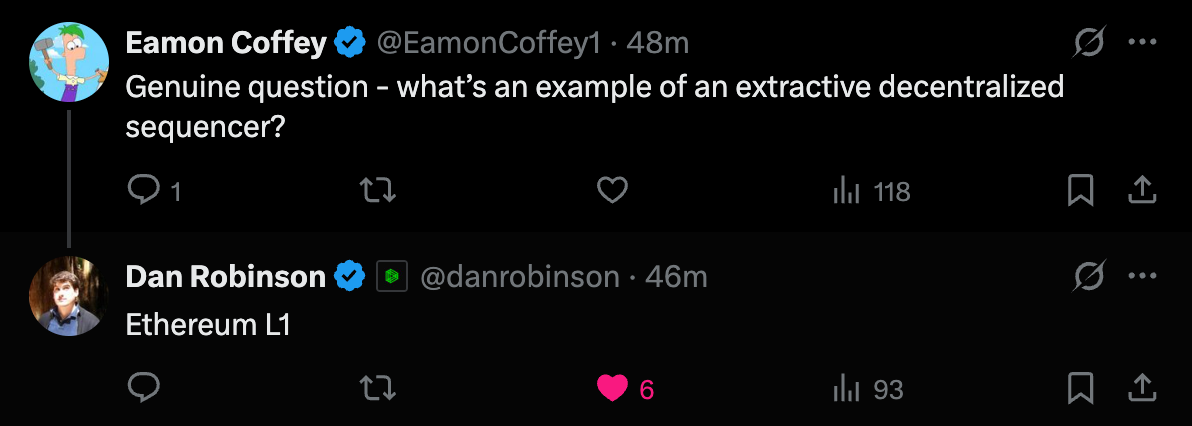1. Ethereum’s sequencing is not friendly
Centralized sequencers are aligned with their users values because they are run by L2s that have a clear incentive to attract users with the best UX possible. Centralized sequencers choose not to frontrun or sandwich their users because they have determined that this would be bad for business. In contrast, Ethereum’s PBS sequencing leads to incentive structures where validators choose to extract as much short term value as possible from users of the chain within the configurations and constraints of offchain PBS. This has led to an inherently unfriendly sequencing model today.